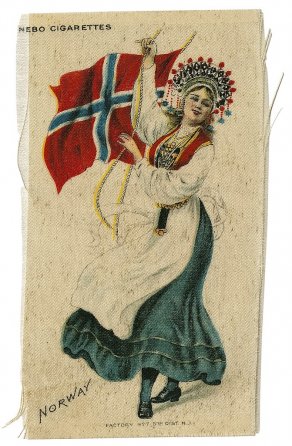
Original in Einar Økland’s private collection, digital reproduction by Bergen Public Library
The 22 July attacks, now five years ago, bore horrific testimony to what an ideology of exclusion and hatred, at the hands of one man, can do. Whilst the terror was of such a scope that the moment called for a unified response, ideological cleavages along the Eurabia, anti-Islam, and anti-immigration lines soon re-emerged in public debate and on social media.
Meanwhile, the conundrum of how collective identities and shared understandings of who ‘we’ are as a democratic society, post-22 July, remains. The reality of our multicultural, diverse society is lived on an everyday basis, though unequally distributed, across the country and within cities like Oslo.
The resilience of shared collective identities, reflected in the post-22 July ‘rose marches’, remains within Norwegian society. The immediate unity, as a response to the 22 July, was arguably in its widest articulations a fragile unity, one based around an understanding that what we share, at least, is that we do not condone the terrorist’s actions, and we want to change our society through democratic means, and not violent ones. That was reflected in the focus on openness, on democracy.
As Norwegian society, much like other European societies, stumbles on and is pushed, reacts, and is nudged in its ways of being a diverse society, the 22 July attacks’ aim of specifically targeting this diversity lies there as an uncomfortable backdrop. One recent story serves to illustrate some of the current struggles of maintaining meaningful collective identities in Norwegian society: the case of a Labor Party local politician who ordered a traditional Norwegian folk costume (‘bunad’) – with a matching hijab. She and the manufacturer got targeted by threats, and the subsequent media storm and social media reactions, came down on either side of the question about whether or not it is ok to add a hijab to the Norwegian folk costume.
Arguments for the garment included the fact that numerous head garments exist as traditional accessories, so this could be seen as an addition. Arguments against centered on this being an alien form of cultural appropriation, entirely overstepping the boundaries of the permissible.
The debates soon became very polarized, descending to name-calling and labelling as racists, but also continued legitimization of the expressed threats. Meanwhile, shared understandings of collective identities were arguably at the core here. People reacted differently, triggered by particular symbolic aspects of what should be the premises for collective identities, and how these can be transformed.
As the five-year mark since 22 July passes, the de-humanizing acts of the perpetrator should be a stark reminder of the need for more attention to be paid to the human, emotional, bodily, and everyday experiences of shared living in diverse societies. The question remains: How can we move forward in negotiating collective identities, with space for different views, whilst maintaining a unity that collective identities are based on?
- This text is written as a Research Reflection in the NECORE project’s recent newsletter.